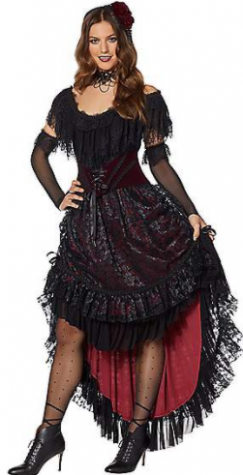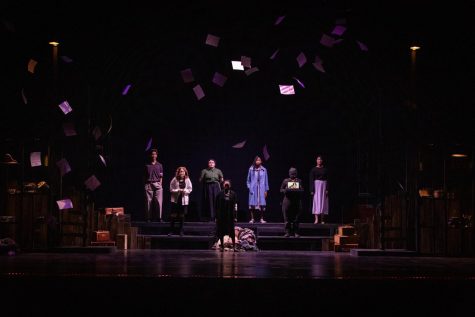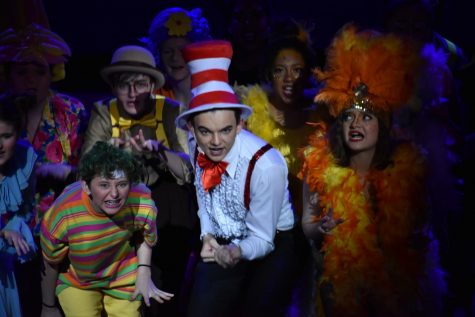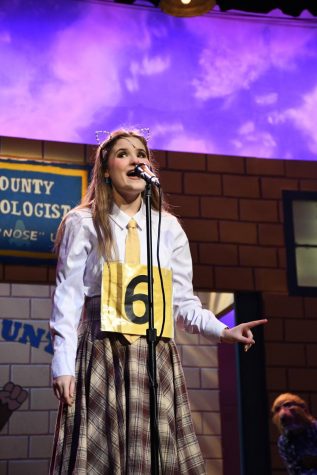Historical Accuracy in Time Period Costumes

It’s almost Halloween, which means people are going to start trying to find costumes to wear to parties or trick-or-treating. Whether or not it represents an animal, celebrity, fiction character, or a costume you can wear with your friend or significant other, a wide variety is available to you.
Some costumes are supposed to represent certain time periods, and don’t do so very well. This is because historical dress can be costly, time consuming, and unattractive to consumers.
Most fabrics used for dresses in history were expensive due to both the quality and quantity needed. A lot of dresses were also hand stitched, and it would not be very smart to mass produce hand-sewn dresses if you are a manufacturer making a large amount of costumes. Also, it would be very unlikely that customers would wear dresses with wide hips and heavy jewels and fabrics. The impracticality of actual historical dress is not ideal for Halloween. That being said, here are inaccurate Halloween costumes compared to accurate historical dress.
This costume supposedly resembles Joan of Arc. Starting with the styling, a 15th century woman wouldn’t wear her hair in waves with a makeup look of smokey eyeshadow, contouring, and dark lip color. Her hair would be worn up and would wear no makeup. Her shield (if she had one, which is doubtful since they were replaced in the 14th century by more effective armor) and sword would not be made of gold, but iron or steel, and the sword would be longer and less shaped.
Her armor would consist of metal plates, while the costume is a short dress made of fabric. It resembles the linen under clothes more than the actual armor. There would also be a place for their sword to stay in on her waist. She would not wear panty hose and her heeled boots would be replaced with metal boots connected to the rest of the armor. Her face is exposed and would be covered by a metal visor. She would be completely covered by metal. The faux chainmail headdress and skirt would be real chainmail attached to the metal armor.



Next, a costume that is supposed to be a pirate in the 17th and 18th centuries. Female pirates were rare, but did exist. Starting with the styling, her hair would probably be worn in a ponytail covered by a bandana and a large tri-pointed hat. She wouldn’t wear any makeup, unlike the smokey-eye and contouring clad woman modeling the costume. Their clothing wouldn’t consist of dark colors, but bright ones to resemble aristocracy and wealth. Female pirates would wear clothing close to what male pirates wore, such as trousers, pantaloons, and breeches. Since those would only reach knee-length, she would wear stockings, replacing the panty hose she’s wearing. She would also wear a large coat. Her outfit would not be form-fitting and tight. She would wear expensive gold chains, necklaces, hoop earrings, and jewels to show her wealth. She would also have a sash to store daggers or pistols. She wouldn’t wear heeled boots, but flat leather ones (usually with a big buckle).



Finally, a costume of an 18th century vampire. The main thing about the accuracy of this costume is that vampires aren’t real in the first place. But we can pretend they are for a second and analyze the dress and styling. Her hair would be piled high and powdered, with a pale face with circles of color on the cheeks. Her dress would have high and wide hips with an even skirt that reaches the floor. The colors would not be dark, since black and other dark dyes were rare, but most likely yellow, green, red, or blue. A lot of ruffles and lace were very common as well, along with many bows in a vertical along the middle of the bodice. Those bell sleeves with lace seen on the previous costume would be more accurate here. Pearls and jewels would appear throughout the dress, which do seem to be present on the skirt on the costume. The neckline would be more square-like and slightly low-cut. Her flower headpiece, choker, and panty hose are not accurate and have to go. Her shoes would have low heels and be made of sturdy leather.



As you can tell, the costumes seem to optimize aesthetic and price over accuracy. Some elements of the costumes are taken from popular fictional representations, such as the fangs on the vampiress costume. Research seems to be one of the things the production team didn’t spend time on. This is very common with manufacturers who make Halloween costumes. Sadly, for those who love historical accuracy in all things, accurate time-period costumes will most likely never be something you find trick-or-treating.
All costumes are sold in the online store Spirit Halloween.





